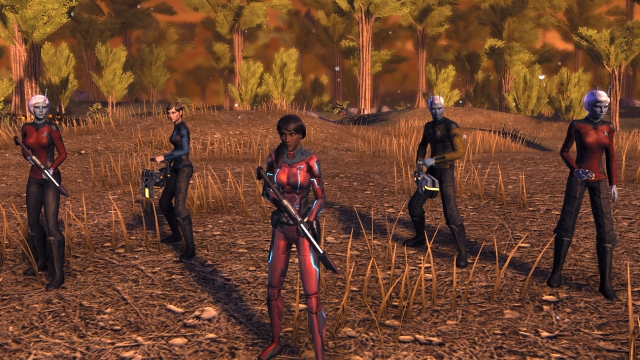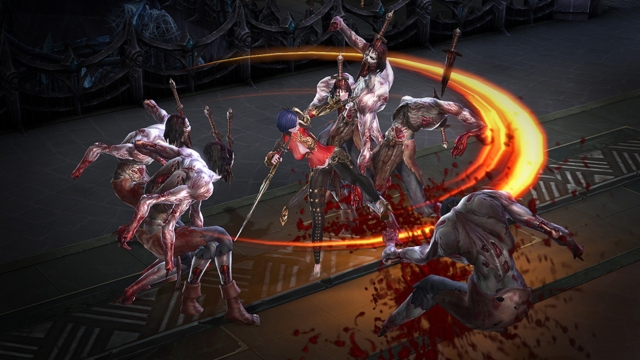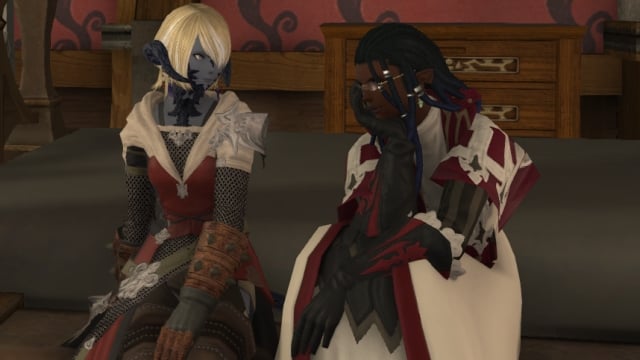A lot of guilds don’t fall apart because their communities don’t work or because the players wind up being wholly incompatible. A lot of them fail simply because they’re not big enough.
I’ve talked a lot about having the minimum number of members necessary, but if you have a guild with four people, it’s often easier to just have a friend list and organize occasional stuff as a group. It’s possible for a guild to be large enough to justify its existence but not large enough to really sustain itself, especially with several games that actively reward and support omniguilds, like World of Warcraft. That’s a topic for another day.
But that doesn’t mean that the work that went into making your existing guild needs to go out the window. While I’ve previously discussed splitting your guild into pieces, this is the other side of things — merging your guild with an existing guild. There are three ways for this to go down, and so I’m just going to dive right into exactly that.

Being absorbed by a larger guild
Let’s start with the most likely scenario, wherein you are the little fish being eaten by the big fish. Your primary concern in this situation is making sure that your members get to enjoy the benefits of a larger guild without losing anything that they’ve already worked for. But generally with a larger guild there’s not a space for your existing officers to just move up in the guild. Right away, there’s going to be a bit of a disconnect.
If there is space for the former guild master to be an officer, they ought to be. Players should still feel like some of the old leadership is in place. But if not, that sense of continuity is still important. Which means that you need to start by creating a community and a reasonable straight line between the points, giving members the feeling of a guild that isn’t just dissolving. So plan ahead.
Start by bringing members of the larger guild along on regular events. Have them incorporate with your guild’s. Bring them on raids or dungeon runs or quick matches or whatever you do as a group. Give the existing guild a feeling that these people aren’t members of a totally different group, but people who could be part of the guild as easily as any of the current members.
Make sure that everyone is on board with merging, to boot. Sometimes it’s not as straightforward as it might seem. Sure, you agree that the guild might need more members, but you might find upon further discussion that what your fellow members really wanted was more recruitment, not a much larger group of people.
Once the merge goes down, obviously, you’ll only have one or two people in the same officer positions, at most. But you should still organize the same events you used to, albeit with the new guild. You’ll have a larger pool to draw from, and hopefully it’ll give the sense that everyone is ultimately working together to make a new shared guild, not just absorb the remnants of the old guild.

Joining up with another equal-sized guild
This is, to me, the far more interesting and positive option. Theoretically, the former is something you could accomplish by just disbanding the guild and having members fill out applications. This is creating something entirely new, a shared guild that didn’t exist before.
When you decide to go this route, start by figuring out how both of your guilds want to progress in terms of future policies and shared rules. Your goal should be to change as little as possible from the leadership side. That doesn’t mean retaining all of the same officers, but it does mean that any major policy changes should happen well in advance of the merge and be accompanied by discussion from members about what’s coming next. Everyone gets a chance to sit down, chatter about the plans, and make decisions about what seems like the best for the new merged guild.
By the same token, officer positions should also be discussed. It’s rarely as simple as the guild just needing twice as many officers; you’ll more often need some but not all of your officer corps to remain in place. There’s no hard and fast solution for what will work, but the best place to start is to figure out what shared needs the guild is going to need to address. Let everyone talk first and foremost about what the officers will look like after the merge, then decide who from the existing officers will remain in charge and who will step down to regular member status.
The obvious route to go here is to disband one guild and have the other guild simply invite all of the existing members, although depending on the game in question there may be automated systems in place. It’s important, just as with the above scenario, to have the two guilds work together ahead of time; unlike the former scenario; however, it’s less a matter of helping your guild grow accustomed to the other players and more about finding the ways in which both groups can mesh together.

Being the larger, absorbing guild
Let’s be real here – there needs to be a good reason for the bigger guild to take on a large number of new members all at once through a theoretically streamlined application process. For the smaller guild, it’s a matter of numbers, but if your guild is absorbing those people you need to have a reason. In some cases, that may be for a reason as simple as liking the players involved, but it might involve a numbers game for you as well.
Figure out what this new influx brings to the group that didn’t previously exist there. Remember, you want to keep your guild size needs in mind; you don’t want to grow too large and prevent effective management. There might be expertise, or just help in reaching a critical mass to expand your guild’s overall focus.
Even if you don’t retain any of the smaller guild’s officers, you should still be speaking to them and listening to them for at least a few months after the merge takes place. It’s possible that there are issues you don’t know about if you just immediately treat your newly absorbed members as if they’ve been there all along. They haven’t been; you know it, and they know it.
Above all else, you want to let the people involved retain their identity. The whole point of this merge is that it allows players to keep the core of their guild identity intact while still acknowledging that the guild just plain isn’t big enough. It’s about making the group work together more efficiently, not about pretending that the original guild was in any way a bad idea. Let the players who were a part of that guild and presumably cared about it quite a bit still feel like part of the guild, even if they’re also a part of yours.
The goal with any merger is about making something bigger out of smaller pieces, working together to forge an alliance greater than the sum of its parts. That means walking a line between keeping old identities and forging new ones as a team; just recognize those problems and make sure that it’s a matter of both thrusts working together rather than at cross purposes.







Published: Jun 1, 2016 05:29 pm